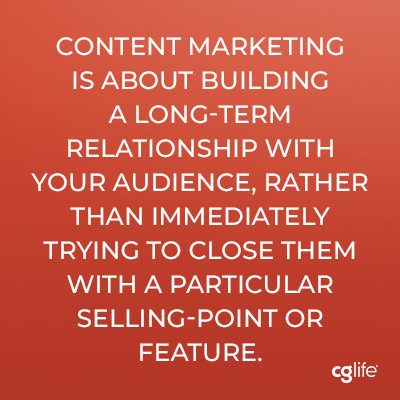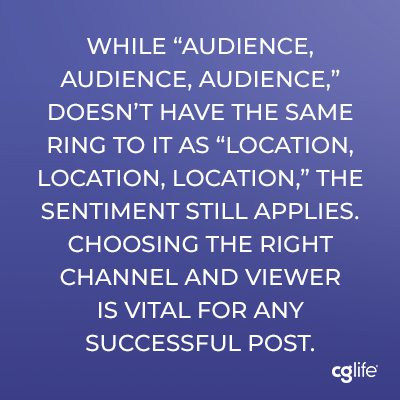During our recent extended stay at home, we’ve spent some extra time with our furry friends and, admittedly, some extra time scrolling through pictures of them on the internet. While many would question this mindless internet scrolling, it was undoubtedly strategic. Life science and healthcare marketers can learn a lot from this long-running, ever-present, and exceedingly cute internet phenomenon. These lessons apply to B2C and B2B social media strategies – even for companies in highly technical fields.
If you think about it, pet social media and scientific marketing are pretty alike in a few key ways. Both are highly competitive since many individuals are out there seeking attention from the same audiences, making it imperative to distinguish yourself. Both also benefit from building an audience through repeated engagement using high-quality content, but it’s the better storytellers who win the day. So, without further ado, here are some pointers from our pets’ social media successes…
1) The devil’s in the details. Yes, we know how cute it is when your pooch looks up at you with his silly human-like eyebrows. But simply posting a zoomed-in picture of his Eugene Levy-inspired brows would be a highway to downvote-doom. You need to showcase the wider furball with more context (maybe with his paws on your lap as he begs for attention).

Marketing a new scientific product is similar, especially when it comes to content. Take, for example, a robotic handling instrument. The automated arm may be your selling point (the equivalent of those cute little eyebrows), but you need to start with the bigger picture; the challenge, the application, the need. Context and background help draw your audience in piece-by-piece, creating shared knowledge and trust in your expertise.
“Content marketing is about building a long-term relationship with your audience, rather than immediately trying to close them with a particular selling-point or feature. As writers, that means we need to do the heavy lifting. We can’t assume they know the background on your product/service and how it connects with what they do,” says Chris Fisher, Ph.D., CG Life Content Strategist.
The solution: Put together a wide-angle view of your product and its benefits, while still emphasizing your prized details. That said…
1) Only zoom out as far as it makes sense. The catch here is that while a broad perspective can be good, too many extraneous details become distracting. For example, say one of your six cats does this super cute thing where she curls up in your bathroom sink. That’s it. That’s the nugget of information that you want to convey. Resist the urge to showcase all of your cats in an elaborate countertop photoshoot.

Likewise, there’s a balance to how much information to put out there. Too many complex details clutter the mind, while not enough may poorly represent your hard work.
“Good writing is important, but it’s equally about editing out the words, details, and paragraphs that you don’t need,” says Juliet Preston, CG Life’s Director of Content. “People have short attention spans these days, and they’re often multi-tasking. Prioritize what they need to know and serve it up as a digestible piece.”
Six cats in one bathroom is a lot. It raises all sorts of questions that distract from the fact that one of them is curled up in the sink. You’ve got a split-second chance to grab the attention of your market, so make sure to get to the point and…
3)Tell a story. Life is a narrative, so tell it like it is! Have you seen those posts after a dog has torn something apart? A picture can show you the messy aftermath and maybe the dog’s shameful look, but a video of you talking through the situation with the pup is so. much. better. With the video you’re able to not only give more context (see point 1), but also connect to the audience as you explain just how the wreckage occurred and how your dog is feeling as she glances back and forth, from you to the ruins, with utter humiliation.
By the same token, perhaps your company has created the next big diagnostic or medical device. You could advertise just the final product and share data that proves its performance, but this doesn’t pull your audience in. Instead, introduce your audience to the principle characters like the researchers who developed it or the doctors who use it, and integrate those people as thought leaders in your content. A primary aim of storytelling is to remind your audience that real humans devoted themselves to solve a specific challenge. Humanizing your work with content about those people, their desire to meet a major goal, and their development process turns your content into a compelling page-turner. Now that you’ve got it polished up…

1) Post it in the right place. While “audience, audience, audience,” doesn’t have the same ring to it as “location, location, location,” the sentiment still applies. Choosing the right channel and viewer is vital for any successful post. A video of your parrot singing “Take on Me” would be popular when posted to a group of bird lovers, but go unnoticed in a group for do-it-yourself projects. In the same way, find the correct audience for your product, no matter how niche it is. This can be easier said than done, so make sure this isn’t an afterthought. For some additional insights on planning ahead and maximizing the likelihood of earned media placement success, check out our blog on magnifying your marketing and public relations using a strategic editorial calendar.
Otherwise, if you need help on this front CG Life keeps up to date on the fast-moving ways of life science and healthcare media. We already know about the corners of the internet/media where your message and content can thrive, so feel free to give us a holler.
Regardless, when framing your next pet project (pun fully intended) keep these ideas in mind. Present a complete picture, but cut out any details that distract from the key points. Give your audience a story, complete with characters and narrative. Finally, take the time to find the right community that needs to hear this message. Once you’ve done that… congrats you’ve created quality content and you did it with the help of internet animals! Now you can reward yourself with some more mindless, but strategic scrolling.
